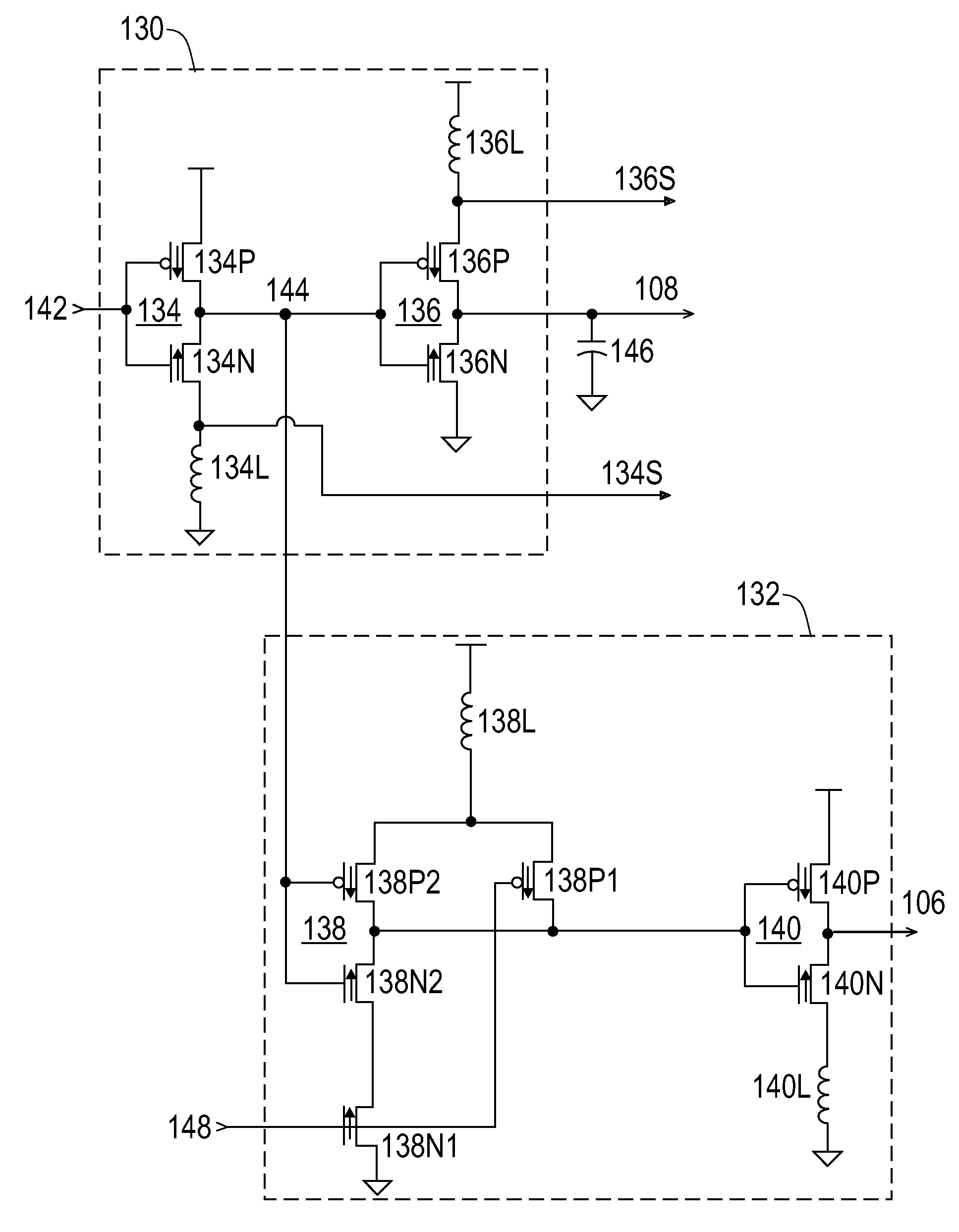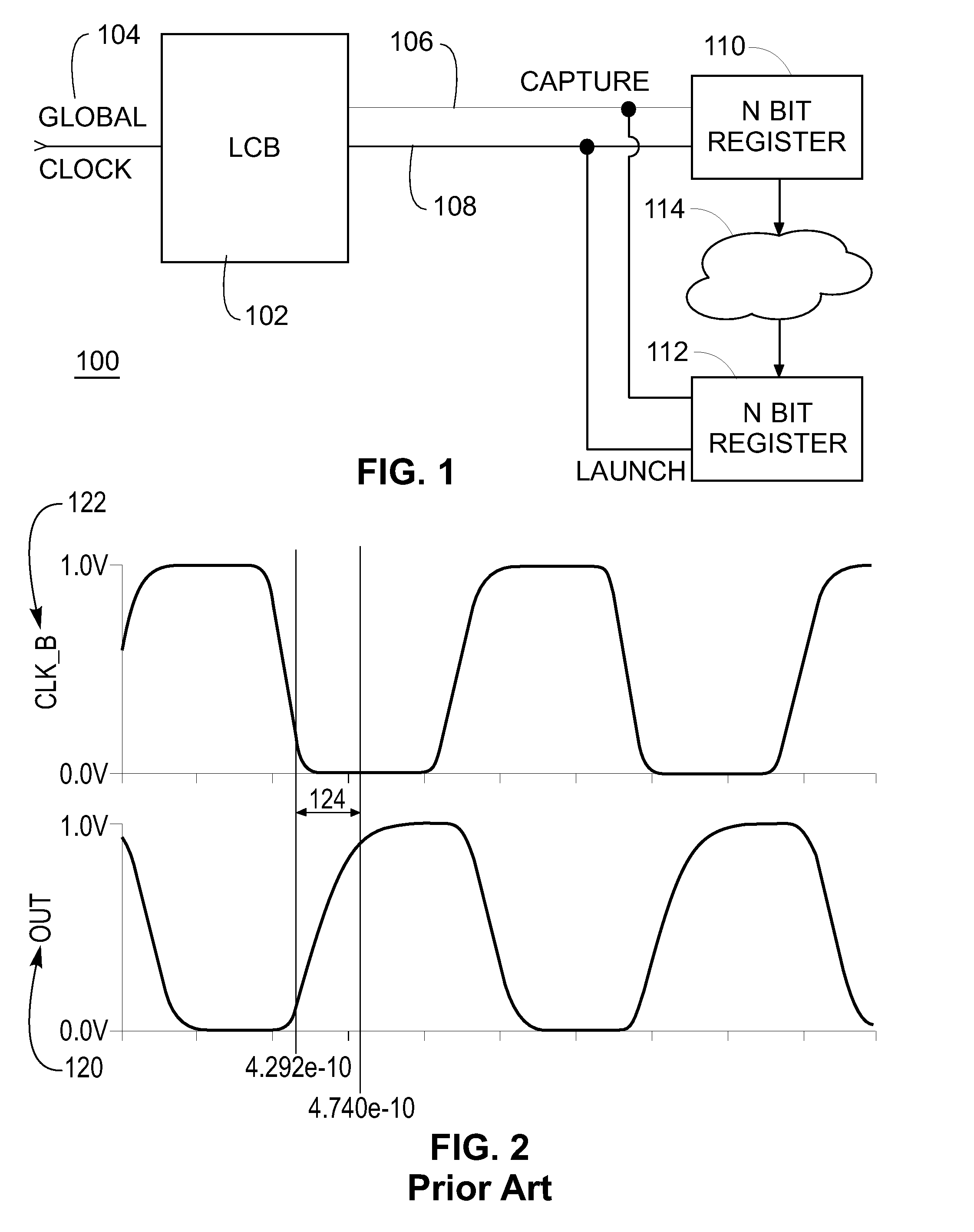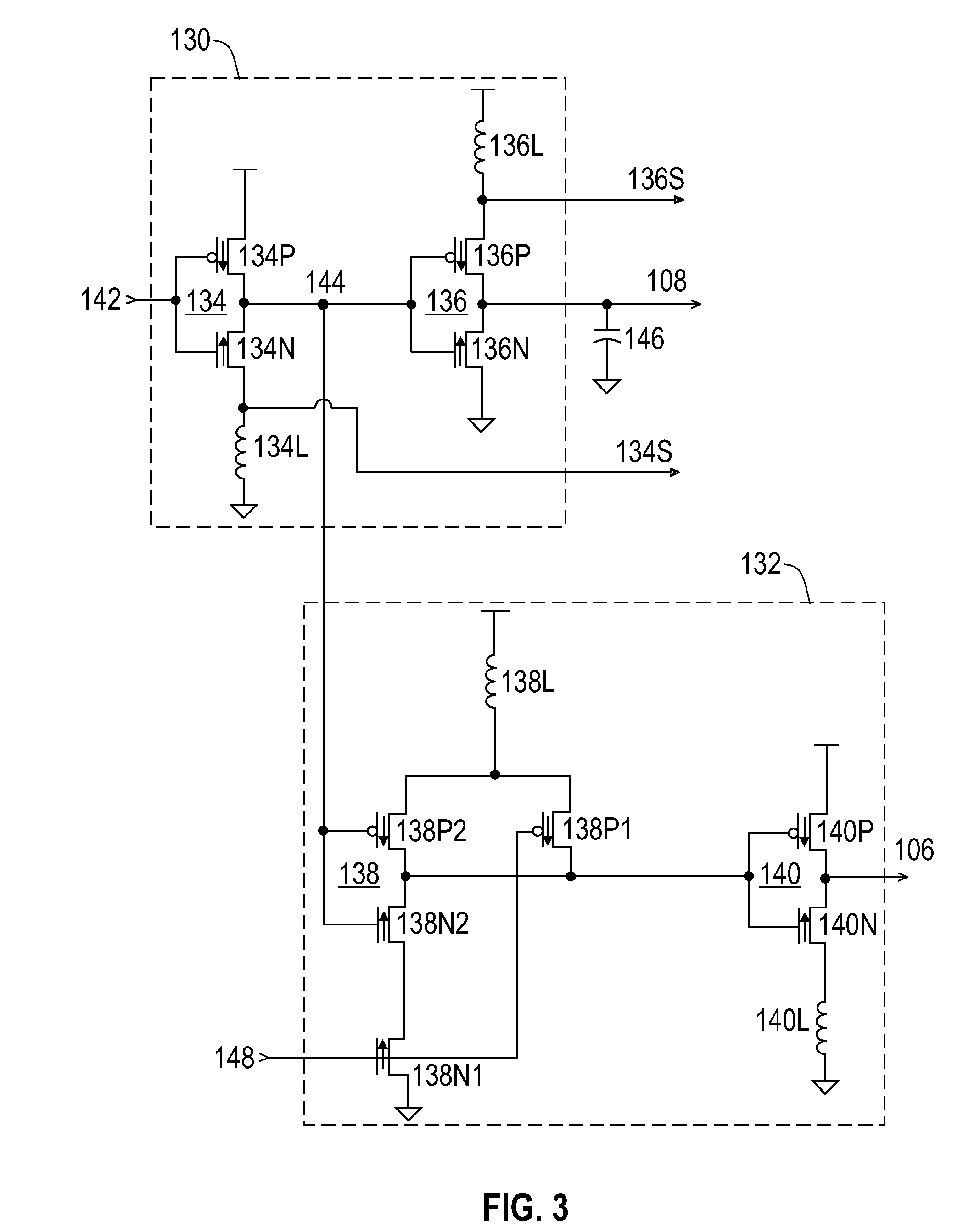Local clock buffer (LCB) with asymmetric inductive peaking
a local clock buffer and inductive peaking technology, applied in logic circuits, pulse techniques, reliability increasing modifications, etc., can solve the problems of reducing lcb, chip power consumption has increased, chip and system level cooling and packaging costs have increased, etc., to and reduce synchronous ic chip power consumption.
- Summary
- Abstract
- Description
- Claims
- Application Information
AI Technical Summary
Benefits of technology
Problems solved by technology
Method used
Image
Examples
Embodiment Construction
[0022]Turning now to the drawings and, more particularly, FIG. 1 shows a block diagram of an example of clocked pipeline logic 100, clocked by a local clock block (LCB) or clock buffer 102, asymmetrically inductively peaked according to a preferred embodiment of the present invention. A preferred LCB 102 receives and re-drives a global chip clock 104 into 2 complementary local clocks, a capture clock 106 and a launch clock 108. Both clocks 106, 108 clock N bit registers 110, 112 on either end of logic 114, e.g., an N-bit data path. In this example, the registers 110, 112 are master / slave registers with logic results being latched in the master latches (not shown) by the launch clock and passed (e.g., from stage 110) through logic (e.g., 114) to the next register stage, 112 in this example. It should be noted that although this example shows a single LCB 102 driving both registers 110, 112, typically, an LCB 102 is provided for each register or a sub-portion thereof. Thus, a typical ...
PUM
 Login to View More
Login to View More Abstract
Description
Claims
Application Information
 Login to View More
Login to View More - R&D
- Intellectual Property
- Life Sciences
- Materials
- Tech Scout
- Unparalleled Data Quality
- Higher Quality Content
- 60% Fewer Hallucinations
Browse by: Latest US Patents, China's latest patents, Technical Efficacy Thesaurus, Application Domain, Technology Topic, Popular Technical Reports.
© 2025 PatSnap. All rights reserved.Legal|Privacy policy|Modern Slavery Act Transparency Statement|Sitemap|About US| Contact US: help@patsnap.com



